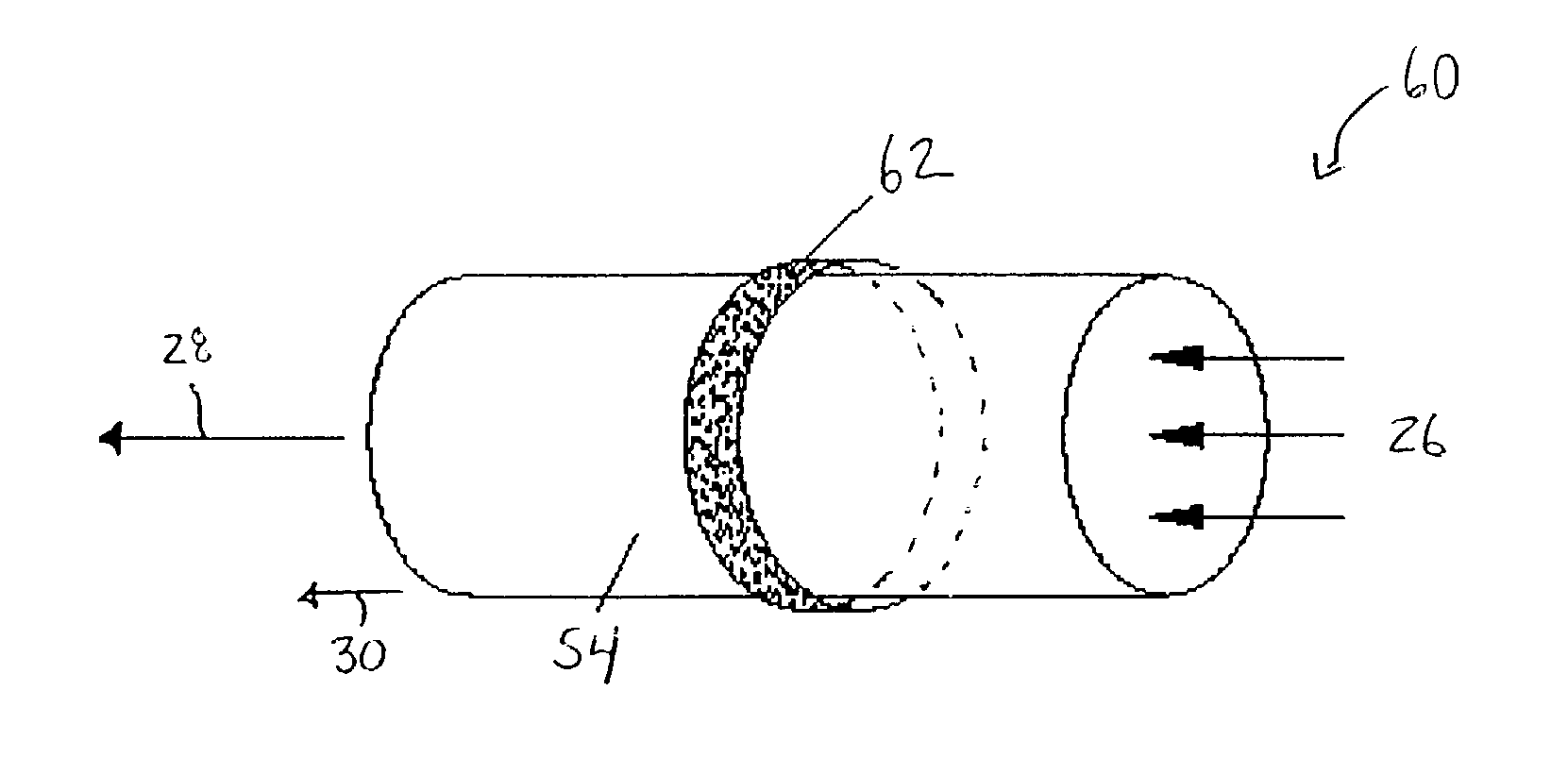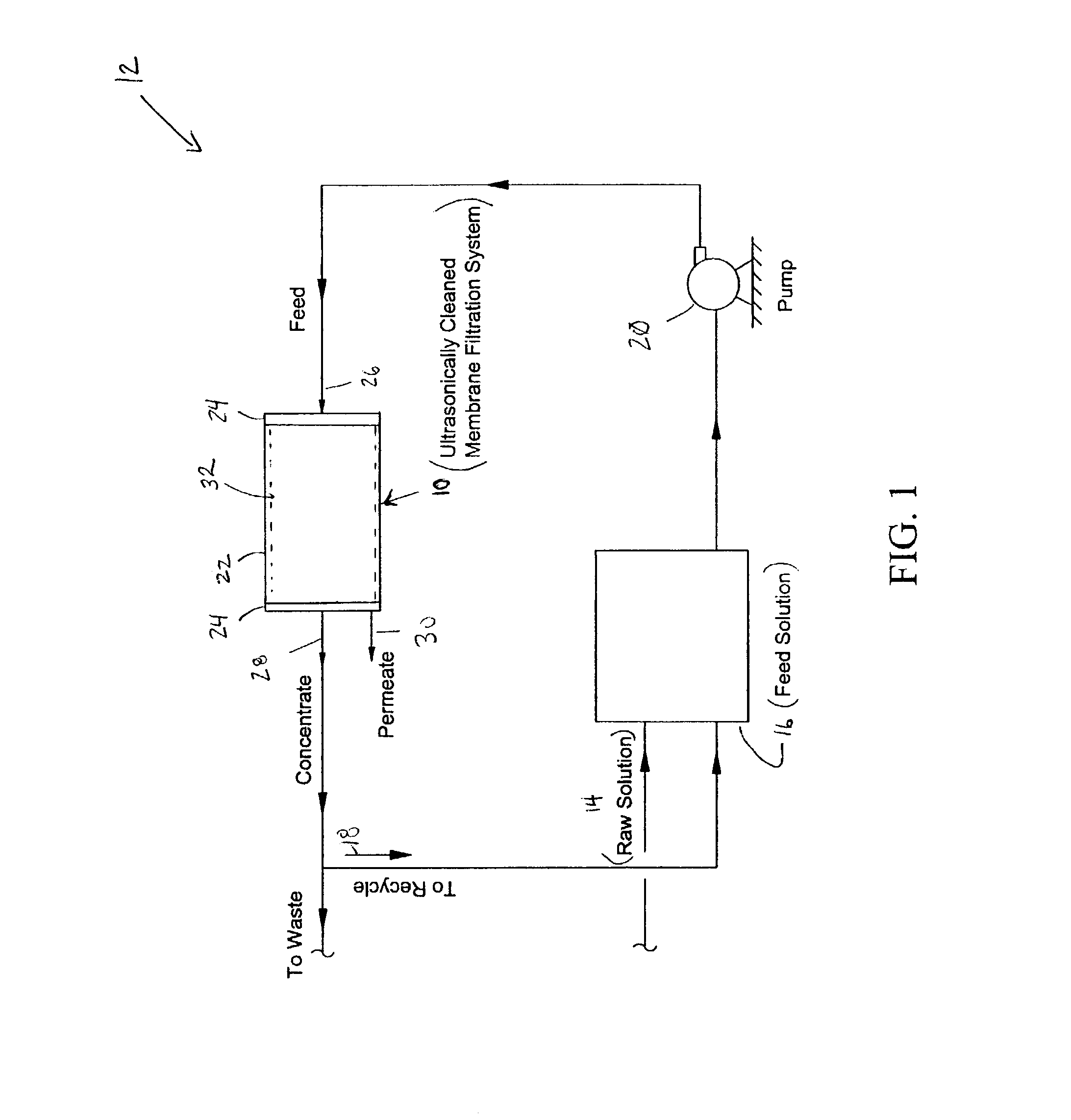Ultrasonically cleaned membrane filtration system
- Summary
- Abstract
- Description
- Claims
- Application Information
AI Technical Summary
Benefits of technology
Problems solved by technology
Method used
Image
Examples
Embodiment Construction
[0030]FIG. 1 is a schematic block diagram of an ultrasonically cleaned membrane filtration system 10 incorporated into a filtration circuit 12 according to an embodiment of the present invention. The filtration system includes one or multiple ultrasonic transducer systems located adjacent to a filtration membrane in direct contact with a liquid to be filtered. Examples of different types of filtration membranes suitable for use with the present invention include, but not limited to, flat sheet, tubular, spiral wound and hollow fiber filtration membranes.
[0031]The filtration circuit 12 includes a raw solution source 14 connected to a feed solution source 16. In one embodiment, the raw solution and feed solution may be one in the same. In another embodiment, a recycle source 18 of concentrate exiting the membrane filtration system 10 and the raw solution source 14 may be combined to provide the feed solution source 16. A pump 20 pumps the feed solution source 16 to provide the liquid ...
PUM
| Property | Measurement | Unit |
|---|---|---|
| Metallic bond | aaaaa | aaaaa |
| Frequency | aaaaa | aaaaa |
| Energy | aaaaa | aaaaa |
Abstract
Description
Claims
Application Information
 Login to View More
Login to View More - Generate Ideas
- Intellectual Property
- Life Sciences
- Materials
- Tech Scout
- Unparalleled Data Quality
- Higher Quality Content
- 60% Fewer Hallucinations
Browse by: Latest US Patents, China's latest patents, Technical Efficacy Thesaurus, Application Domain, Technology Topic, Popular Technical Reports.
© 2025 PatSnap. All rights reserved.Legal|Privacy policy|Modern Slavery Act Transparency Statement|Sitemap|About US| Contact US: help@patsnap.com



